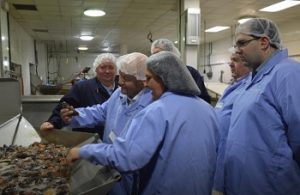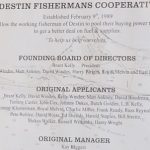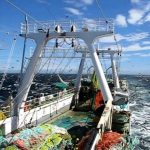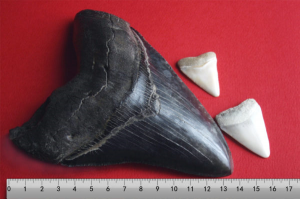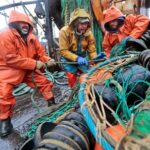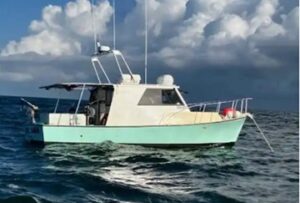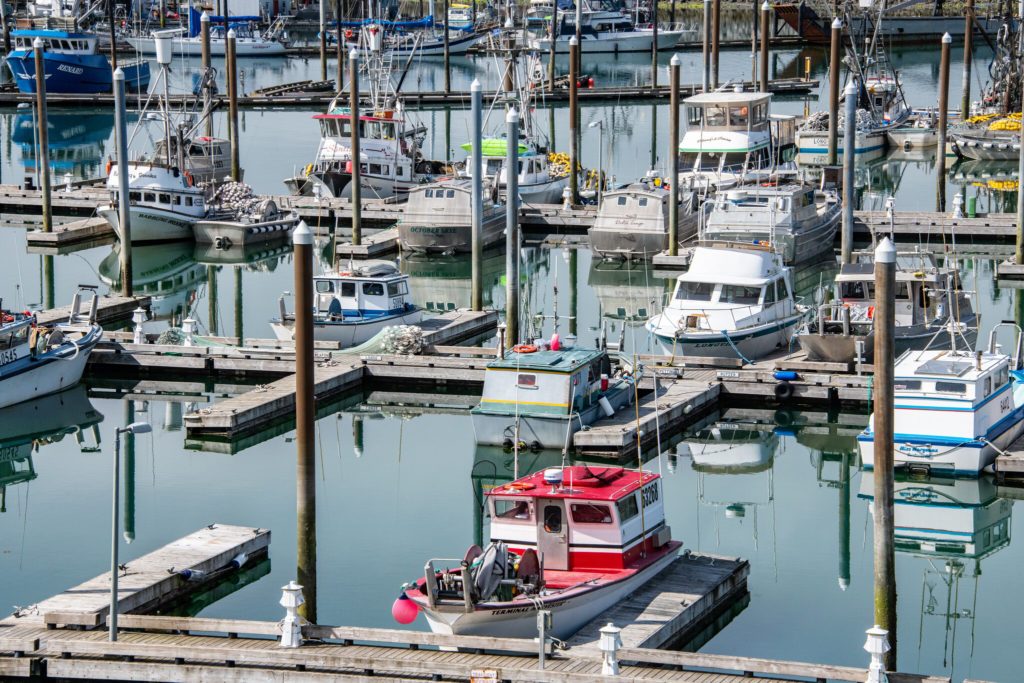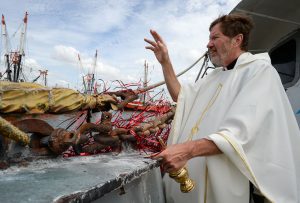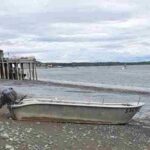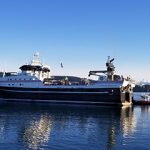Daily Archives: January 26, 2017
Fisherman facing life in prison after finding 20 kilo’s of cocaine at sea, setting up a distribution ring
 The question is often light-heartedly posited among friends in coastal towns of what one would do if he were to discover a bail of washed-up narcotics. Local fisherman Thomas Zachary Breeding, 32, chose to distribute for sale the 20 kilograms of cocaine he found – and he advises you not do the same. “This changed my life and way of thinking and also made me aware of some of the dangers that can be found off shore in the Gulf,” Breeding wrote recently in a letter to The News Herald from the Washington County Jail, where he is being held to await his sentence for conspiracy to distribute a controlled substance. “I would like to let the public know the dangers and what not to do if this situation comes about.” Breeding was one of five individuals arrested in summer 2016 on charges of conspiracy to distribute a controlled substance. The group was indicted by a federal grand jury in September after Breeding found 20 kilograms of cocaine – the equivalent of about 45 pounds – while out at sea and set up a distribution network with the other people. Read the story here Another article, click here 16:16
The question is often light-heartedly posited among friends in coastal towns of what one would do if he were to discover a bail of washed-up narcotics. Local fisherman Thomas Zachary Breeding, 32, chose to distribute for sale the 20 kilograms of cocaine he found – and he advises you not do the same. “This changed my life and way of thinking and also made me aware of some of the dangers that can be found off shore in the Gulf,” Breeding wrote recently in a letter to The News Herald from the Washington County Jail, where he is being held to await his sentence for conspiracy to distribute a controlled substance. “I would like to let the public know the dangers and what not to do if this situation comes about.” Breeding was one of five individuals arrested in summer 2016 on charges of conspiracy to distribute a controlled substance. The group was indicted by a federal grand jury in September after Breeding found 20 kilograms of cocaine – the equivalent of about 45 pounds – while out at sea and set up a distribution network with the other people. Read the story here Another article, click here 16:16
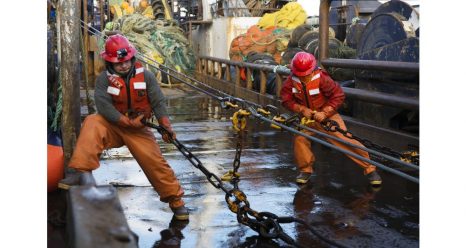
Harvesting flatfish in the Last Frontier
Docked in Seattle a few days after Thanksgiving, the F/T Constellation is still filled with the smell of coastal Alaska waters; briny ocean and fresh fish. It wafts up from the lower levels and covers the deck. The vessel has been scrubbed and scoured, but the aroma is impossible to shake. The 165-foot vessel spent the better part of 2016 trawling the Bering Sea. For months, it carried several dozen crewmembers, decks full of equipment and freezers full of fresh seafood. It motored in and out of Dutch Harbor, the fishing capital of the Aleutian Island chain. While it’ll spend the early winter in Seattle, the break is brief—the vessel heads north again each year when the fishing season resumes in January. Built in Louisiana and based in Washington, the Constellation is crewed by men from all over the world. But it’s also distinctly Alaskan; part of a hardy fleet fueling local economies throughout the Southwest. Read the story here 13:25
Fluke Cut Rally scheduled for Friday, 10 am at Fishermen’s Supply in Point Pleasant Beach
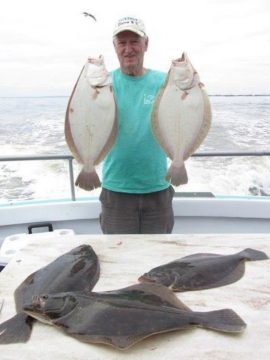 A rally against the proposed cuts to the summer flounder harvest is planned for this Friday morning in the parking lot of Fishermen’s Supply in Point Pleasant Beach. Along with members of the fishing community, the commissioner of the state Department of Environmental Protection Bob Martin and U.S. Congressman Frank Pallone (D-N.J.) will lead the rally and speak in opposition to the harvest reduction. Both Martin and Pallone have been critical of the Atlantic State Marine Fisheries Commission and the Mid-Atlantic Fishery Management for their proposed drastic cuts to the summer flounder harvest. Pallone has been outspoken against the science used to count fish landings and stock biomass that has led those management bodies to conclude that anglers overfished their quota last year and the biomass of summer flounder is shrinking. Read the rest here 12:32
A rally against the proposed cuts to the summer flounder harvest is planned for this Friday morning in the parking lot of Fishermen’s Supply in Point Pleasant Beach. Along with members of the fishing community, the commissioner of the state Department of Environmental Protection Bob Martin and U.S. Congressman Frank Pallone (D-N.J.) will lead the rally and speak in opposition to the harvest reduction. Both Martin and Pallone have been critical of the Atlantic State Marine Fisheries Commission and the Mid-Atlantic Fishery Management for their proposed drastic cuts to the summer flounder harvest. Pallone has been outspoken against the science used to count fish landings and stock biomass that has led those management bodies to conclude that anglers overfished their quota last year and the biomass of summer flounder is shrinking. Read the rest here 12:32
Canadian researchers denied samples of oil spill dispersant Corexit 9500, Corexit 9580 by Nalco Environmental Solutions
 Canada’s Department of Fisheries and Oceans says it will try again to secure samples of an oil spill dispersant for testing by government-funded researchers after the American manufacturer refused two requests in 2016. The impasse surrounds research by fish biologist Craig Purchase of Memorial University of Newfoundland in St. John’s. Purchase was working on a $75,000 project funded by DFO comparing two types of oil dispersant products called Corexit on beach-spawning capelin. But he never got the chance to compare Corexit 9500 — an open ocean oil spill dispersant — with Corexit 9580, a surface agent used to clean beaches. He was able to get a sample of the oil spill dispersant from DFO but the manufacturer, Nalco Environmental Solutions, refused to provide Purchase with a sample of the beach cleaning agent Corexit 9580 last April. Nalco refused again when DFO asked for a sample on his behalf. Read the story here 09:24 Read this Corexit’s Deadly Legacy
Canada’s Department of Fisheries and Oceans says it will try again to secure samples of an oil spill dispersant for testing by government-funded researchers after the American manufacturer refused two requests in 2016. The impasse surrounds research by fish biologist Craig Purchase of Memorial University of Newfoundland in St. John’s. Purchase was working on a $75,000 project funded by DFO comparing two types of oil dispersant products called Corexit on beach-spawning capelin. But he never got the chance to compare Corexit 9500 — an open ocean oil spill dispersant — with Corexit 9580, a surface agent used to clean beaches. He was able to get a sample of the oil spill dispersant from DFO but the manufacturer, Nalco Environmental Solutions, refused to provide Purchase with a sample of the beach cleaning agent Corexit 9580 last April. Nalco refused again when DFO asked for a sample on his behalf. Read the story here 09:24 Read this Corexit’s Deadly Legacy
In Chesapeake Bay’s changing ecosystem, blue crab is king (and moving north)
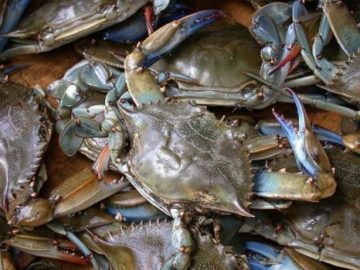 In the face of an evolving ecosystem, experts agree many of the differences in Chesapeake Bay marine life can – at least in part – be attributed to a worldwide warming trend. Over the last three decades, water temperatures in the Chesapeake Bay have increased about 1.5 degrees Celsius, or about 2.7 degrees Fahrenheit, said Rom Lipcius, professor of marine science at the Virginia Institute of Marine Science. The change means populations of many native sea creatures in the Chesapeake have moved or expanded north in search of cooler water temperatures, and other non-native creatures have moved in. As the warming trend continues, experts say some marine species will thrive as others struggle to survive in the face of temperature, environment and predator and prey changes. “It’s not all bad news, and it’s not all good news,” said Jon Hare, science and research director for the National Oceanic and Atmospheric Administration’s Northeast Fisheries Science Center. “There are both winners and losers in this situation.” There have been a number of species, including blue crab, scup and black sea bass, that have shifted or extended northward along the Atlantic coast, said Hare. Read the story here 08:35
In the face of an evolving ecosystem, experts agree many of the differences in Chesapeake Bay marine life can – at least in part – be attributed to a worldwide warming trend. Over the last three decades, water temperatures in the Chesapeake Bay have increased about 1.5 degrees Celsius, or about 2.7 degrees Fahrenheit, said Rom Lipcius, professor of marine science at the Virginia Institute of Marine Science. The change means populations of many native sea creatures in the Chesapeake have moved or expanded north in search of cooler water temperatures, and other non-native creatures have moved in. As the warming trend continues, experts say some marine species will thrive as others struggle to survive in the face of temperature, environment and predator and prey changes. “It’s not all bad news, and it’s not all good news,” said Jon Hare, science and research director for the National Oceanic and Atmospheric Administration’s Northeast Fisheries Science Center. “There are both winners and losers in this situation.” There have been a number of species, including blue crab, scup and black sea bass, that have shifted or extended northward along the Atlantic coast, said Hare. Read the story here 08:35
ITS HUGE! Grey Sole limits nearly doubled as scientists use ’empirical approach’ to set new specifications
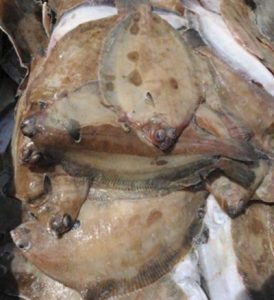 Meeting in Portsmouth, New Hampshire, the New England Fishery Management Council approved an acceptable biological catch of 878 metric tons of witch flounder, also known as grey sole, for 2017. When adjusted for management uncertainty, the move will result in a 2017 annual catch limit of 839 metric tons — nearly twice the 2016 annual catch limit of 441 metric tons. The unanimous vote by the council also underscored the escalating distrust commercial groundfishermen reserve for the science NOAA Fisheries uses to fuel its stock assessments. In December, NOAA Fisheries scientists were forced to concede that the model being used to develop the witch flounder stock assessment was irretrievably flawed after it failed the peer review phase of the process. Read the story here 07:51
Meeting in Portsmouth, New Hampshire, the New England Fishery Management Council approved an acceptable biological catch of 878 metric tons of witch flounder, also known as grey sole, for 2017. When adjusted for management uncertainty, the move will result in a 2017 annual catch limit of 839 metric tons — nearly twice the 2016 annual catch limit of 441 metric tons. The unanimous vote by the council also underscored the escalating distrust commercial groundfishermen reserve for the science NOAA Fisheries uses to fuel its stock assessments. In December, NOAA Fisheries scientists were forced to concede that the model being used to develop the witch flounder stock assessment was irretrievably flawed after it failed the peer review phase of the process. Read the story here 07:51
Industrial grade corrosion inhibitor, lubricant and cleaner prevents and removes rust, protects engines and critical equipment
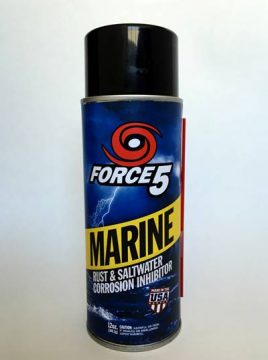 For ship and vessel owners that struggle with corrosion caused by water, humidity, condensation, salt air and environmental contaminants, Force5 Marine works as corrosion inhibiter, lubricant and cleaner to protect engines and critical equipment and keep it in good working order. The harsh marine environment costs an estimated $50-80 billion in corrosion related damage worldwide, and can lead to the failure of critical equipment including engines, fittings, valves, switches, lighting, and electrical gear if not properly maintained. The Force5 Marine spray protectant penetrates into metal parts to prevent rust and corrosion, while forming a bond that repels salt water and other contaminants. Read the rest here 07:20
For ship and vessel owners that struggle with corrosion caused by water, humidity, condensation, salt air and environmental contaminants, Force5 Marine works as corrosion inhibiter, lubricant and cleaner to protect engines and critical equipment and keep it in good working order. The harsh marine environment costs an estimated $50-80 billion in corrosion related damage worldwide, and can lead to the failure of critical equipment including engines, fittings, valves, switches, lighting, and electrical gear if not properly maintained. The Force5 Marine spray protectant penetrates into metal parts to prevent rust and corrosion, while forming a bond that repels salt water and other contaminants. Read the rest here 07:20

































